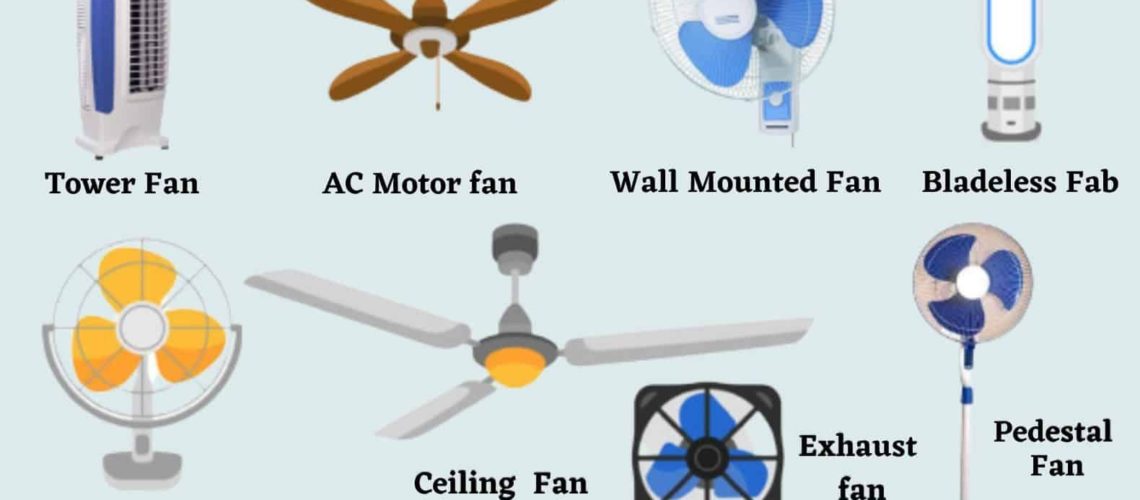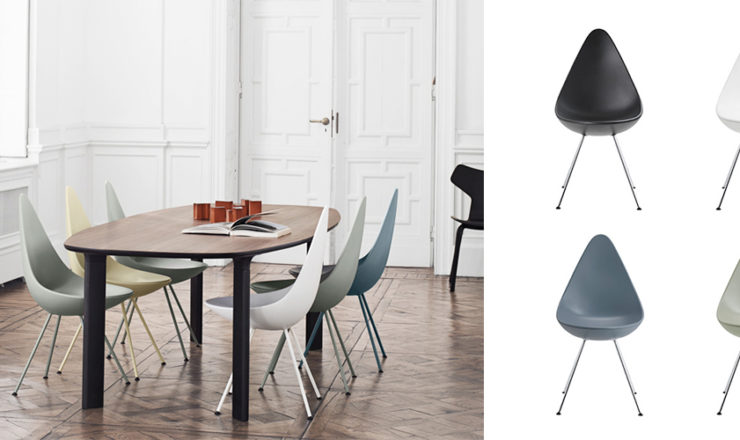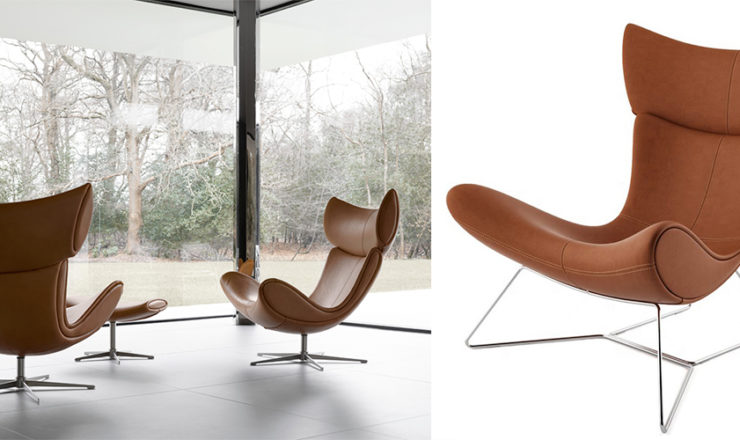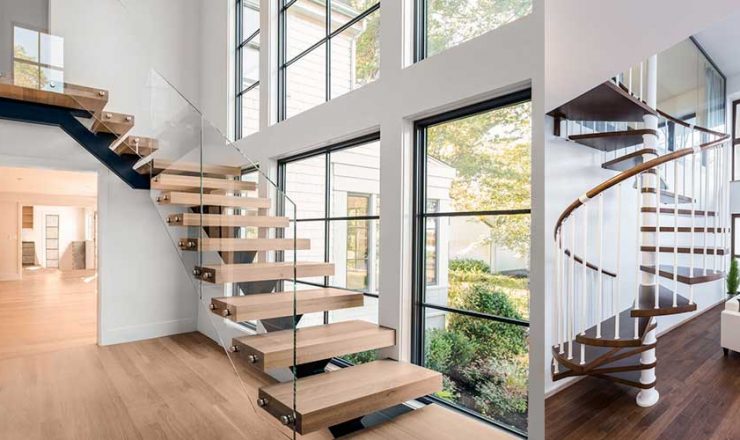
Types of Fans – Ranging from Residential Ceiling Fans to Industrial Blowers
It is essential to maintain the correct temperature, ventilation, and humidity in our indoor and outdoor environments, whether it’s a humid day or a warm winter.
In this respect, fans are indispensable; they provide simple pleasures from simple devices.
The task of choosing the best fan from the many different fans on the market can be difficult. Ceiling fans are available in many different types, including pedestal fans, wall-mount fans, table fans and more. We’ve spoken to many contractors who in the industry and they have all told us the same thing, Ceiling fans are the most popular fans that get installed in terms of the different types of fans out there.
Many of the southern states not only have Ceiling Fans both indoors and outdoors, but also have Mister Fans as well. Chris Almasan, the owner of an Electrical Company in Naples Florida, Service Trade Pros, mentions that they’ve started getting requests from “homeowners asking for fan misters on lanai’s and patios” that are close to the gulf of a water canal.
Understanding the different types of fans and their features will help you to choose the right fan for your needs.
We’ve put together a list of different types of fans and explained the reasons why you should choose from them.
Here’s a list of Types of Fans
- Floor Fans
- Industrial Fans
- Tower Fans
- Pedestal Fans
- Exhaust Fans
- Table Fans
- Wall Mount Fans
- Bladeless Fans
- Misting Fans
- Cabinet Fans
1. Ceiling Fans
Ceiling fans are the most common appliances in almost every single office or home. Ceiling fans circulate air by mounting them on the ceiling and using blades that rotate around a hub, either creating down wind or suctioning wind out of an area.
Important Tidbit: Ceiling fans do not affect the temperature in the room. The fan simply increases airflow by dislodging air. It allows for better heat dissipation and reduces body temperature.
Modern Ceiling Fans are available in many styles, colors and shapes to suit the interior design and theme of the room. You should choose the blade size based on the dimensions of the room.
These fans come with a speed control to regulate the airflow. Antique fans may have a decorative light bulb at the center. Most Modern Fans come with a remote.
Ceiling fans are not just for homes or offices. Ceiling fans for large areas are available with larger blades, higher wattage, and bigger sizes. Ceiling fans can be purchased off the shelf or online.
Ceiling fans are available in two options:
Ceiling Fans with AC Motors
Ceiling Fans with AC Motors The most common ceiling fans, AC motor ceiling fan are the most cost-effective. These ceiling fans can be a bit bulky and less energy-efficient.
DC Motor Ceiling Fans
DC motor ceiling fans have a more advanced design, are compact and efficient. They can be set to reverse so that they provide warmth during the winter.
2. Floor Fans
The second most popular fans are Box fans and floor fans are used to cool the ground or the floors.
These fans are portable and can be used in multiple locations. These fans are perfect for use outdoors, such as balconies, terraces or patios.
3. Industrial Fans
Much like Floor fans, Industrial blowers or fans are fans that have a specific purpose. They can be used for ventilation, exhaustion, aeration, and drying. They can be used for a variety of purposes, depending on the type and application.
Here are a few examples of industrial fans that you may find in use:
- Mix Flow Fans
- Cross Flow Fans
- Axial fans
- Centrifugal fans
- Jet Fans Induced
- Propeller Fans
4. Tower Fans
The tower fan is tall and narrow. The tower fans can be used to increase the airflow in your home at a low cost. They can improve air circulation in rooms that are not well cooled by air conditioning. They have fan speed control and swing options that allow air to be thrown in different directions.
They are small and compact, so you can put them in corners or confined spaces. Ideal for small spaces. These units have built-in air purifiers and ionizers.
5. Pedestal Fans
They are capable of cooling large spaces. These fans are called stand-up fans because of their height. They are portable and lightweight. Often, they have swinging options that can distribute air evenly throughout the room.
These are perfect for large spaces and halls, where cooling is required for many people.
6. Exhaust Fans
Exhaust fans remove the humid, hot, or unhealthy air and replace it by fresh, cool air. These fans are used to prevent excessive moisture and heat from building up. Exhaust fans are essential in removing unwanted odors, contaminants and dangerous gases. In bathrooms and kitchens, where they are frequently used, exhaust fans help maintain good air quality.
Install exhaust fans on a wall, window or ceiling.
7. Table Fans
Desk fans and table fans are ideal for moderate climates. They provide a cost-effective way to customize your cooling comfort. The fans aren’t meant to cool the whole room. Instead, they can be used in a specific area. They are usually small and lightweight.
They are not suitable for outdoor use, as they will be used close to each other. The plugs can be used with a standard two-pin / three-pin plug or a USB cord. Air Circulators can cool small to medium-sized rooms.
8. Wall Mount Fans
The fans are installed at strategic locations on the wall to circulate air in a room. The design includes controls for fan speed and swing.
They are ideal for small rooms, warehouses, and offices because they can be mounted.
9. Bladeless Fans
The bladeless fan has a hollow loop at the top that is elongated. The fan circulates air around it and pushes it out of tiny holes in its curved circumference. The air multiplier technology is used to create a powerful airflow in the room.
Interesting Tip: Bladeless fans do not have blades, but they are called that because their moving parts are hidden when in operation. These products have tiny fans hidden inside that suckers air.
They are expensive but are the most safe for home use because they have no moving parts. It is perfect for homes with children or pets.
10. Misting Fans (typically found in Damp or Warm Areas)
The misting fan creates a fine mist by combining a strong air current and a spray of water drops. These fans require a constant supply of electricity and water.
These are a great alternative to air conditioners and can be used outdoors in hot, dry climates and during the summer. Some models are designed for indoors and have their own water tanks.
11. Cabinet Fans
Cabinet fans are compact fans that can be used to ventilate a small area and remove excess heat. They are compact and easy to install in small spaces.
These can be used as an alternative to the main HVAC system in CPUs, servers rooms, chimneys, and other areas.
We can see that there are many different types of fans, each with a wide range of features.
In terms of features, remote controlled operation and improved energy efficiency is gradually becoming more common.
Installation of IoT-enabled fans that can be remotely controlled, connected to WiFi and auto-triggered when certain thresholds are reached is the latest technology trend.
The final decision will depend on your budget, style, and design preferences as well as the purpose for which you are purchasing the fan.




